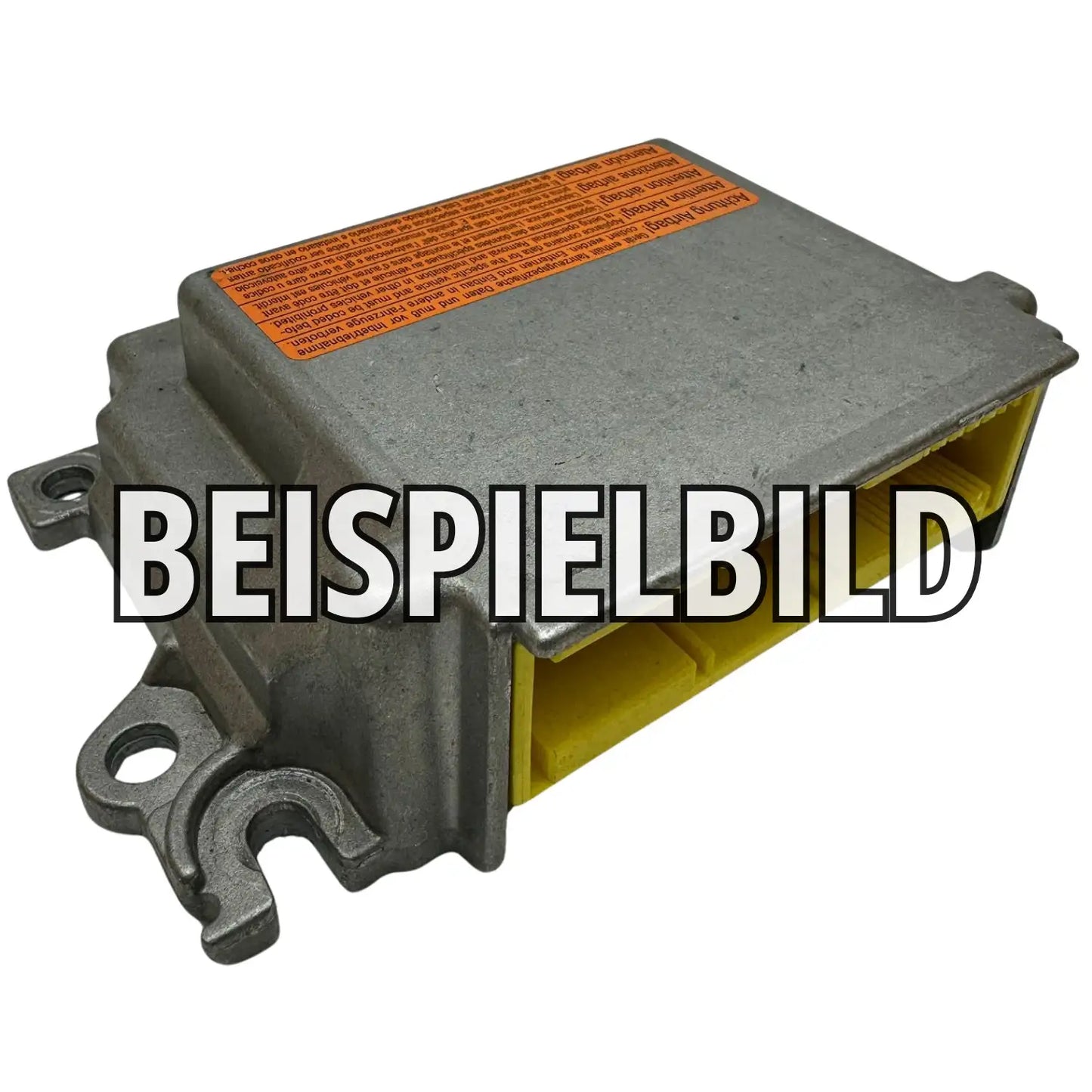Lamborghini Diablo 6.0 VT airbag control unit repair
So funktioniert die Reparatur Ihres Airbag-Steuergerätes bei uns

What is a Lamborghini Diablo 6.0 VT airbag control unit?
The Lamborghini Diablo 6.0 VT airbag control unit is the central safety unit that activates all occupant restraint systems in the event of an accident. It precisely monitors sensors, stores relevant crash data, and ensures the timely and proper function of all airbag modules and seatbelt pretensioners in the vehicle. This specialized electronic control unit is safety-critical for models built between 2000 and 2001.
This control unit is essential for the correct detection of impact events and the reliable deployment of the airbags in the driver and passenger compartments of the super sports car. It continuously processes signals from acceleration and impact sensors.
Why is the Lamborghini Diablo 6.0 VT airbag control unit defective?
The Lamborghini Diablo 6.0 VT airbag control unit can fail for a variety of reasons, including aging internal components, overvoltage caused by electrical problems, or even water damage that affects its sensitive electronics. After an accident, it also stores crash data, which can cause the system to lock up or fail, requiring a qualified Lamborghini Diablo 6.0 VT airbag control unit repair.
Common causes of failure include internal hardware errors or software corruption, which can be caused by aging or environmental influences. A faulty sensor or a disrupted communication line can also put the system into an error state.
A typical sign of a faulty control unit is a persistent glow of the airbag warning light on the dashboard. This requires immediate diagnostics at a workshop to restore driving safety.
Common error codes for Lamborghini Diablo 6.0 VT airbag control unit repair
When diagnosing a faulty airbag control unit in a Lamborghini Diablo 6.0 VT, generic error codes may occur, as model-specific codes are often only accessible via the manufacturer's own diagnostic systems. It's important to note that the codes listed here are general in nature, and a detailed fault analysis requires specialized equipment for Lamborghini Diablo 6.0 VT airbag control unit repair.
- B1000 → Control unit communication error → Cause: Malfunction in the data transmission to or from the airbag control unit, often due to loose cables or internal processor problems.
- B1001 → Control unit internal error → Cause: Internal hardware or software malfunction within the control unit itself, which triggers a malfunction.
- B1002 → Control unit software error → Cause: Problem with the firmware or calibration data of the airbag control unit, which requires reprogramming or replacement.
What part numbers are available for the Lamborghini Diablo 6.0 VT airbag control unit repair?
For Lamborghini Diablo 6.0 VT airbag control unit repairs, the clearly confirmed and verified Lamborghini OEM part number 60005469 is crucial. Intensive research in professional spare parts databases and catalogs, including TecDoc and TecAlliance, has shown that this is the only specific and official number for this model. No alternative original numbers from suppliers such as Bosch or Continental could be found.
Part number 60005469 is therefore the 100% confirmed, valid OEM part number you need to correctly identify and procure the airbag control unit. This is especially relevant for owners of classic performance vehicles.
When searching for spare parts or planning a repair, this number should always be used as a reference to ensure compatibility and safety. The exclusivity of this number underscores the special adaptation to the Lamborghini Diablo 6.0 VT.
Technical specifications and compatibility of the Lamborghini Diablo 6.0 VT airbag control unit
The Lamborghini Diablo 6.0 VT airbag control unit was specifically developed for the 2000 and 2001 coupe models to meet the safety requirements of the powerful V12 engine and Visco Traction all-wheel drive. Its primary function is the precise processing of sensor signals to control and deploy the airbag system, as well as communicating with other vehicle systems such as ABS and seatbelt pretensioners, which requires a specialized Lamborghini Diablo 6.0 VT airbag control unit repair.
The control unit is designed for the Lamborghini Diablo VT 6.0 with its 6.0-liter displacement and approximately 543-550 hp. It receives data from various crash sensors distributed throughout the vehicle.
Electrical interfaces include multi-pin connectors for integration into the on-board electronics, including OBD-II compatibility for diagnostic systems.
Functionality and installation position of the Lamborghini Diablo 6.0 VT airbag control unit
The airbag control unit in the Lamborghini Diablo 6.0 VT continuously receives data from the crash sensors to initiate airbag deployment within milliseconds in the event of an impact, thus maximizing occupant safety. It also controls the seatbelt pretensioners and communicates with the ABS control system for a coordinated safety concept.
The integrated self-diagnosis function monitors the system while driving and informs the driver of malfunctions via a warning light. It also allows for the storage of data on impact events and errors.
The airbag control unit is typically installed in the footwell or under the dashboard near the driver or passenger. This central installation location allows for optimal integration into the vehicle's safety architecture.
Special features and diagnosis of the Lamborghini Diablo 6.0 VT airbag control unit repair
The Lamborghini Diablo VT 6.0's airbag control unit is uniquely adapted to the parameters of the V12 engine and all-wheel drive system, requiring sophisticated data processing. Its specificity as part of the final Diablo model year with the 6.0-liter engine makes specialized diagnostics and Lamborghini Diablo 6.0 VT airbag control unit repair essential to ensure safety and functionality.
Due to the limited production time and the exclusive nature of the vehicle segment, spare parts availability is particularly important for owners. Repair services often specialize in calibration and software updates.
A correct diagnosis of the airbag system requires specialized manufacturer tools and specialist knowledge. Only then can the cause of the failure be precisely identified and a safe repair or replacement be carried out.
- Choosing a selection results in a full page refresh.
- Opens in a new window.


